Bengal ficuses: features, tips for choosing, care and reproduction

Bengal ficus (mulberry family) is an evergreen tree that has been growing for many years. Its other names are banyan, "Andrey". Indians consider this plant sacred and decorate temples with it. Buddhists believe that it has a calming effect on the mind, gives peace to a person and forms a favorable aura around him. Many states consider ficus to be a symbol of eternal life on earth.
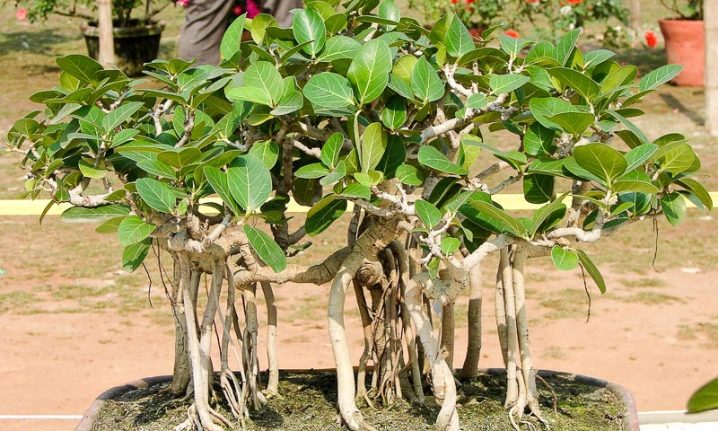
Peculiarities
A favorable environment for this representative of the flora is observed only in the climate of Ceylon, India, Sri Lanka and Bangladesh. In his native countries, the ficus is called the tree of wish fulfillment. Growing up in the wild, the plant is able to spread over an area of up to several hundred square meters. Banyan has huge ground roots that grow like branches in a horizontal direction. An uncountable number of such processes grow, their distinctive feature is the absence of a fleecy cover.
Ficus roots develop slowly, over time most of them dry out before reaching the ground. The shoots that have reached the ground, under favorable conditions, take root rather quickly. The aboveground part of the roots thickens, and thus new tree trunks are formed. In addition, the banyan tree bears fruit. Small fruits of orange color are eagerly eaten by birds and mammals, and the remaining seeds also contribute to the growth of the "wish fulfillment tree".
The height of the banyan tree is very large - up to 40 m, and the crown of this tree can cover up to 500 sq. m of land. Dense large foliage is another distinctive feature of this plant. Each formed leaf has an elliptical shape and reaches 25 cm in length. Under a strong protective layer on the leaf plate, veins are visible, which have a light green color. Wild ficus is a fast growing tree that grows up to 1 m per year.

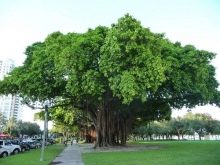

How to choose?
In order for the culture to grow and develop well in indoor conditions, it is necessary to choose a plant correctly. It is worth adhering to the following rules.
- Choose a young plant.
- Inspect the tree for damage and shake gently. If the leaves fall off, then the plant is not worth buying.
- Do not buy wood in cold weather. Ficus purchased in winter is poorly adaptable.
- The root system should not be black or brown.
To make the foliage look beautiful, many sellers polish it. After purchasing the plant, hold it in a warm shower for a couple of minutes.
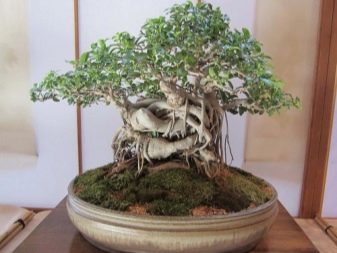
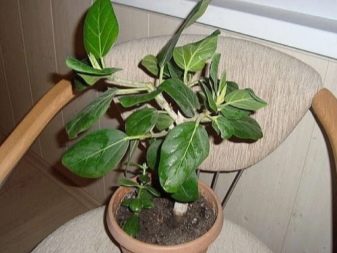
How to care?
Bengal ficuses are considered unpretentious representatives of the flora with an agreeable character, however, flower growers need to follow basic rules for caring for a tree. If this is not done, the luxurious symbol of life will turn into a sick and capricious creature, shedding leaves.
Home care rules:
- do not forget to water the ficus in a timely manner;
- provide the temperature regime;
- make sure that the air is not dry;
- the tree should grow in a bright room;
- be sure to transplant ficus as needed;
- fertilize and feed regularly.
Compliance with all the rules will give the correct development to your green pet, which will delight you with its beauty for a long time.
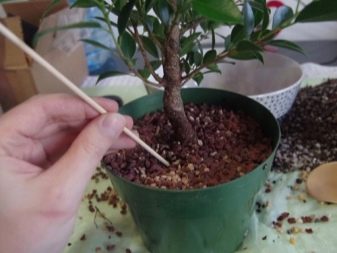
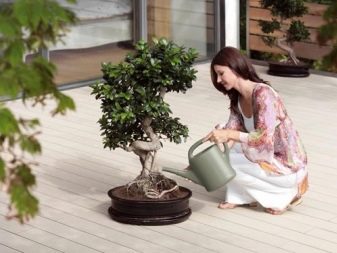
Landing capacity
Ficus pots are selected depending on the size of the crop.A small plastic container is suitable for a young banyan tree, and a large heavy container, for example, a ceramic flowerpot or a wooden tub, for a grown tree. Ficus growth can be slowed down somewhat if the pot is too loose. When such an effect is undesirable, the plant should not be given a wide space.
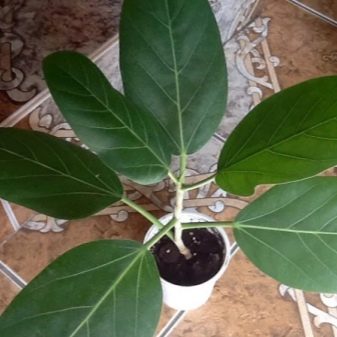
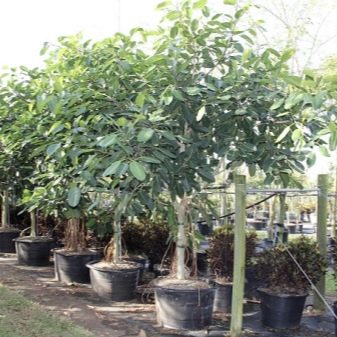
The soil
Suitable soil for ficus is neutral or slightly acidic. A dense soil saturated with nutrients will be enough. Gardening stores sell a ready-made earthen mixture for growing indoor plants of this type, but you can also mix it yourself from peat, sand, leafy and sod soil. When planting a tree in a container a drainage layer must be laid. It is usually made from medium-sized crushed stone and ordinary sand.
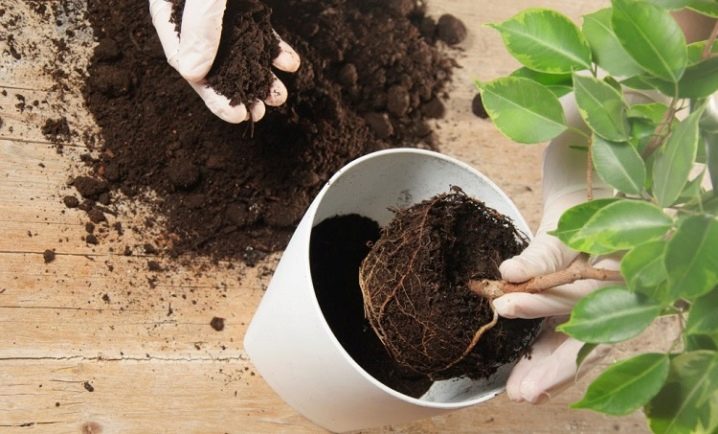
Top dressing
In the summer, ficus is fed twice a month with mineral and organic compounds alternately. It is important that the mixtures contain a lot of potassium and nitrogen for the harmonious development of the tree. In winter, the representatives of the flora mostly rest, therefore you need to feed the "wish fulfillment tree" no more than once every 2-3 months. In the cold, the culture is fertilized with dressings for non-flowering plants.
It is important to stir the granules in clean water, using only a weak solution for fertilization.
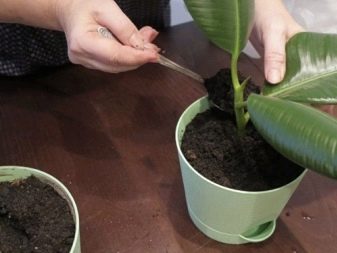
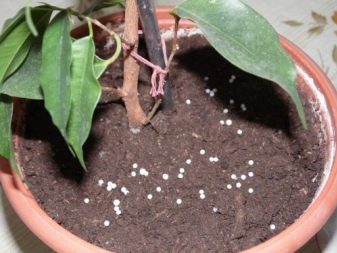
Watering
It is necessary to water the ficus on time, since the plant does not like overdried soil. The regularity of watering depends on what time of the year it is done. The easiest way to tell if it's time to water your plant is to place your finger in the ground. If the ground is stuck, the ficus does not need watering. If the finger is dry, soil moisture is required.
Remember that due to excess moisture, the root system begins to rot, so before the next watering, make sure that the ground surface has time to dry out by about 2 cm... Water the ficuses with warm water until the liquid soaks into the soil. When excess water drains into the pan, it is poured out.
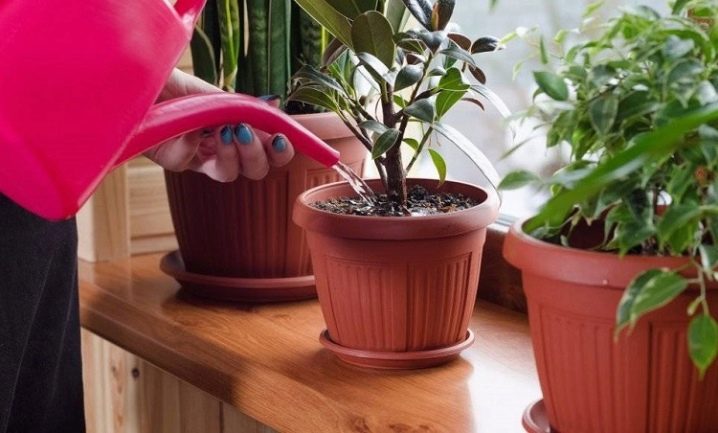
During drought, the plant can be bathed. Place it in the shower or take it out into the yard. Water the tree with a shower or hose, and if it is too large and cannot be moved, just spray the crown periodically from a sprayer.
To rid the banyan tree of accumulated dust, dampen a soft cloth or sponge with water and wipe down the foliage.
Despite the fact that Bengal ficus has many leaves, it evaporates little moisture. The average required level of air humidity for a plant is 40-50%. With the onset of the heating season, move the flowerpot away from the battery or other source of heat, otherwise the leaves will dry out and the plant will die.
In summer, do not be afraid to keep a banyan tree on the terrace, balcony or yard.
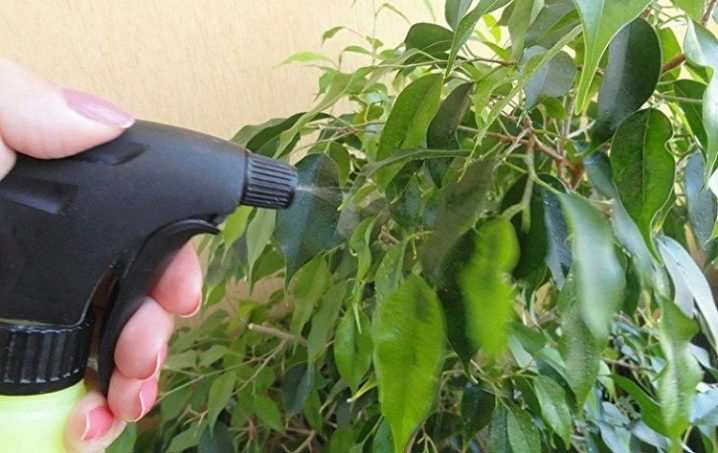
Disease and pest control
Bengal ficus has strong immunity against most diseases. Of pests and parasites, the following are dangerous for him:
- mealybug;
- aphid;
- shield;
- thrips;
- spider mite.
The appearance on the leaves of holes, streaks, as well as spots of whitish or yellow color indicates the presence of thrips. To get rid of the infection, it is enough to simply redeem the plant, paying special attention to the leaves. Periodically examine the underside of the leaf plates to detect pests. For example, the presence of white spots with hairiness indicates the appearance of a worm. The stems are the favorite habitat of the scale insect. It is a scaly insect and it is easier for it to camouflage itself on the stem.
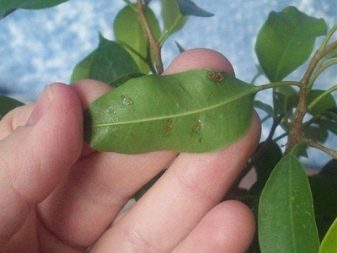

In order not to have to treat the tree from time to time from various pests and parasites, treat it periodically with special chemicals. If the tree is sick, move it away from healthy plants until it recovers. Also, for preventive purposes, you can treat the leaves with a 1% solution of potassium permanganate or wipe with soap and water.
The culture is afraid of low temperatures: if the plant freezes, the leaves wither.And when yellow spots appear, this indicates excessive watering. The appearance of a brown edge on the leaves means that there has been prolonged dryness or too much fertilization has been applied. Such manifestations on young foliage indicate a lack of light. If the leaves grow slower and lose their former brightness, it's time to feed the plant.
Ficus "Andrey" is an unpretentious culture. Even a novice florist can cope with its cultivation. The plant loves partial shade, has a stable immunity to diseases and is not too demanding for watering and feeding. But he needs a lot of space, it is because of this that banyan trees are more common in office premises.
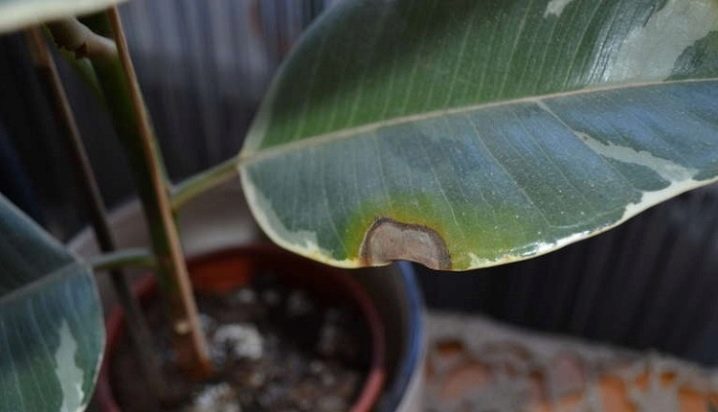
Pruning
It should be remembered that the tree grows quickly, and regular pruning is required to give it a decorative look. A skilled owner can give it any shape: multi-tiered or spherical. Special artisans even grow bonsai from ficus on their windowsill.
Pruning is carried out in the spring or in the first half of summer. The process is pretty simple:
- before the procedure, imagine how the ficus will look later, so as not to be disappointed in the future;
- give the tree a natural shape;
- use sterile and sharp instruments;
- cut to the edge, at an angle.

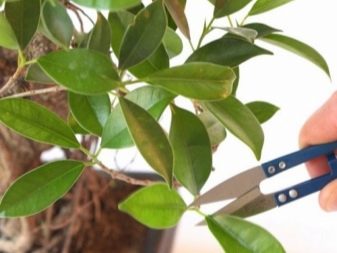
Transfer
Immediately after the purchase of a plant, its first transplant is carried out. But if he has fallen leaves, the procedure is postponed for a couple of weeks until the small tree fully adapts to the new place. The next times, the ficus is transplanted in early spring, until the tree begins to actively grow. The rhizomes must be examined. Rotten and damaged areas should be removed.
The young culture needs to be replanted annually. To do this, take a container 50 mm larger than the previous one, and drainage is laid on the bottom of the pot. In order not to damage the roots, the plant is transplanted together with a lump of earth, using the transshipment method. Old trees are not replanted. Their topsoil is replaced with new nutrient soil.

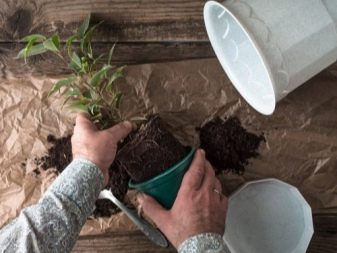
Lighting and temperature control
When caring for a tree, do not forget that it needs light, so it is placed in a sunny place, but shaded from excess ultraviolet radiation. In direct sunlight, there is a risk of burns that will appear as yellow spots. When there is not enough light, the leaves curl and wither. In order for the crown to develop evenly and to have enough lighting, you need to periodically turn the flowerpot with the tree in different directions to the light source.
When growing ficus at home, you need to maintain a moderate temperature, about + 18-26 ° C, and in winter the plant is able to withstand heat up to 12-16 ° C.
The tree is negatively affected by sudden temperature jumps and drafts.

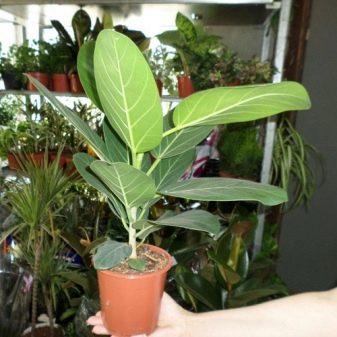
How to reproduce?
There is nothing difficult in the reproduction of this culture. You can get a new plant, cutting off a stalk 10-15 cm long from an adult specimen. It is better to first treat the shoot with a growth stimulant, and then place it in water until the roots appear, this happens after about a couple of weeks. When the root system gets stronger, the young plant is planted in the ground. There is another option - the cutting is rooted in the ground, covering it with plastic wrap on top. After 7 days, the plant is fed, and when the tree begins to grow, the planting is fertilized again.
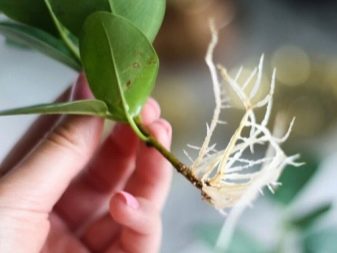
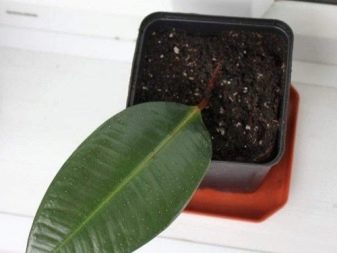
Also, the "wish fulfillment tree" is grown from seeds, but at home this is a long process. The seeds germinate better at high humidity and high air temperatures, that is, in a mini-greenhouse. To grow ficus from seeds, you need to follow these steps:
- prepare a container;
- place the seeds in the ground 15 mm;
- cover with foil, air for half an hour twice a day;
- do not forget to water;
- when they grow up, transplant into pots.
You don't need to be a gifted florist to grow a banyan tree at home. The culture looks stylish, original and at the same time not capricious at all.Any beginner can master the cultivation of a wish-fulfillment tree, and it will be a great decoration for any interior.
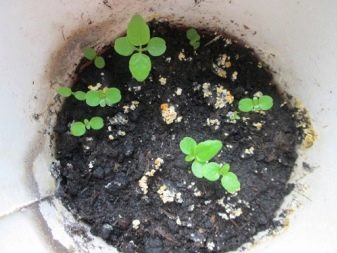
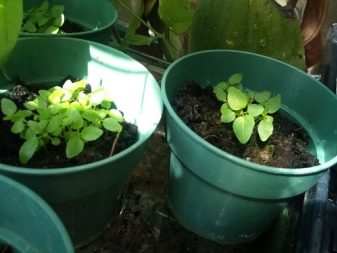
You can watch the experiment on crown formation with Bengal ficus in the video below.































The comment was sent successfully.